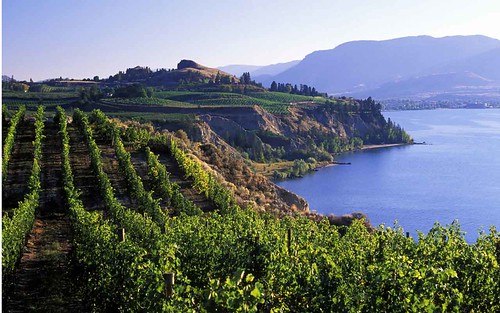
I had the pleasure of being one of the judges for the Canadian Wine Awards held this summer in the Okanagan Valley.
As a member of the tasting panel for Wine Access, the magazine that conducts the most important wine awards in Canada, I generally concentrate my efforts on the wines of Ontario, so a chance to taste in B.C. and get caught up on the wines crafted there, is always an eye-opener for me.
Our two major wine regions in Canada (Niagara and the Okanagan) are vastly different in climate and styles. If I had to generalize, I’d say Niagara excels in Riesling, Pinot Noir, Chardonnay and Cabernet Franc. In the Okanagan, the hotter climate allows better ripening of the Bordeaux varietals of Merlot, Cabernet Sauvignon and Cabernet Franc and also Syrah, Pinot Gris and even Viognier, though there have been fantastic results with Chardonnay and a sprinkling of Rieslings in recent vintages.
The most impressive wines of the competition at the 2012 judging were the bigger red wines, mostly dominated by B.C. wineries. The Syrahs, in particular, were standouts and garnered the highest scores.
While Niagara’s Tawse Winery was named the top winery in the country, for the third year in a row, collecting a mind-blowing 32 medals at the awards, the next four spots in the top 10 were B.C. wineries.
Second place was captured by Nk’Mip, with Skaha-based Painted Rock in third, Church and State Wines in fourth and Road 13 Vineyards in fifth place.
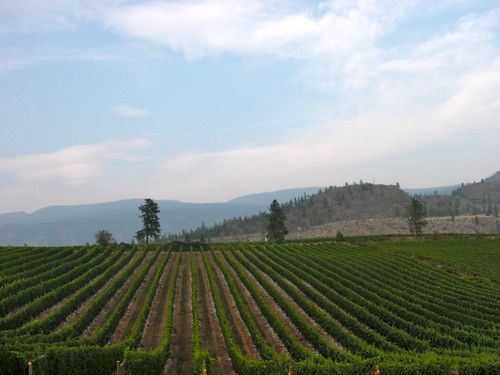 Rounding out the top 10, in order, were: Hidden Bench (Niagara), CedarCreek Estate Winery (Okanagan), Van Westen Vineyards (Okanagan), Quails’ Gate Estate Winery (Okanagan) and finally, Inniskillin Niagara, in the No. 10 spot.
Rounding out the top 10, in order, were: Hidden Bench (Niagara), CedarCreek Estate Winery (Okanagan), Van Westen Vineyards (Okanagan), Quails’ Gate Estate Winery (Okanagan) and finally, Inniskillin Niagara, in the No. 10 spot.
The Best Red Wine of the year was the Quinta Ferrerira Syrah 2009, a wine that I can say with confidence was thrilling to judge during the final tasting with the judges.
Note: Full results will be in the December issue of Wine Access, on newsstands Dec. 1.
The judges spent their days during the week tasting wines in competition and their evenings exploring the many and varied regions of the Okanagan and Similkameen Valley.
While I don’t taste as many B.C. wines as my colleagues from the West, and not nearly as much as when I lived in Alberta and travelled to the Okanagan Valley three or four times a year, I still see a fair amount of B.C. wines for review.
Here’s what’s crossed my tasting desk recently from a few different B.C. wineries:
Tinhorn Creek
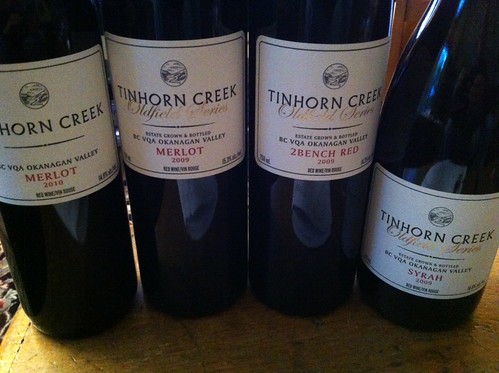
Tinhorn Creek is located on the Golden Mile in the South Okanagan and farms on two distinct tracts of land — 50 acres at the home winery (the Tinhorn Creek vineyard) and 100 acres on the Black Sage Bench (the Diamondback vineyard).
This winery does a lot of things right under the guidance of winemaker Sandra Oldfield, but it is the Merlot that provides the backbone for the wine program of this winery.
Tinhorn produces two distinct tiers of wines, the estate line and the Oldfield Series, which are Oldfield’s signature wines. This tier provides Oldfield with a playground for experimentation and is a creative showcase for the best wines from each vintage.
Here are three Merlots (or Merlot-based) wines that got my full attention:
Tinhorn Creek Merlot 2010 ($19, 88 points) — A nose of sweet oak, cherry, raspberry, crushed wild berries and subtle spice notes. There is a vein of firm acidity that runs through the core of this wine, lifting the red fruits, licorice and spice notes.
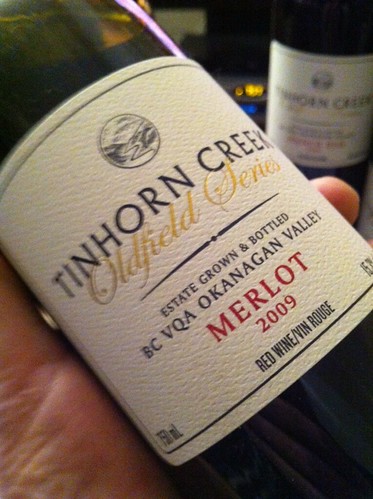
Tinhorn Creek Oldfield Series Merlot 2009 ($29, 91) — The Merlot was the first Oldfield Series wines made at this estate. This vintage contains a bit of Cabernet Franc and Syrah. The extracted cassis, cherry-kirsch and raspberry fruit on the nose work well with vanilla toast, spice, licorice and savoury spices. It shows complexity on the palate with a wide array of flavours including black currants, plums, cherries, boysenberry and mocha-pepper notes. The finish is smooth and long, all delivered on a bed of plush tannins. Very nice Merlot.
Tinhorn Creek Oldfield Series 2Bench Red 2009 ($30, 93 points) — This Bordeaux-style blend of Merlot, Cabernet Sauvignon, Cabernet Franc and Petite Verdot is simply the best red I have tasted from Oldfield. She has captured the essence of the art of assemblage and made it seamless in this blend. It possesses a lovely nose of spice-driven cherry, dark plum and currant fruits with minerals, loamy earth, toasted oak and saddle leather all following in concert. It’s bold and brash yet works harmoniously, almost elegantly, on the palate and is driven by a fabulous fusion of fruit, spice, wood and acid. The flavours on the palate show more red berries and earthy-brambly fruits with a layer of oak-driven spices that light up the palate and is persistent through the long finish. Try laying this down in the cellar for five years or more.
•••
Fort Berens Estate Winery

For Berens is Lillooet’s first commercial winery, located on the Fraser River about 250 kilometres northeast of Vancouver.
This past fall was only the winery’s second vintage from the estate vineyard as it works toward a production that is entirely from estate Lillooet fruit.
The winery was established by Dutch immigrants, Rolf de Bruin and Heleen Pannekoek, in 2005 when they left the Netherlands and shifted from corporate careers to living and working on a farm. With the founding of Fort Berens, the Pannekoeks turned their lifelong dream of running a vineyard and winery into a reality.
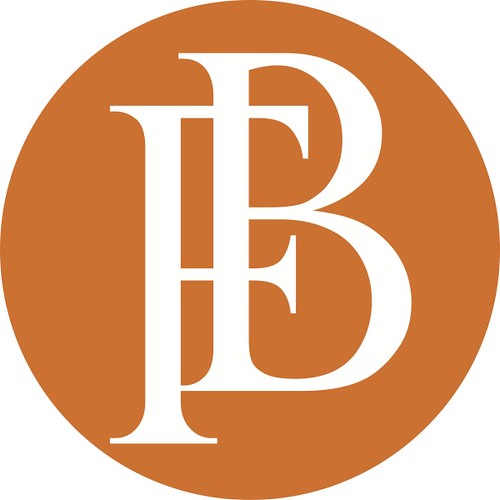 Initially, the founders sought to purchase property in the Okanagan for the business. However, they found it difficult to secure a suitable and affordable property upon which to start the business in that part of British Columbia. Shortly after, two experienced B.C. viticulturists, Richard Cleave and John Vielvoye, pointed them in the direction of Lillooet, located in B.C.’s scenic Fraser River Canyon.
Initially, the founders sought to purchase property in the Okanagan for the business. However, they found it difficult to secure a suitable and affordable property upon which to start the business in that part of British Columbia. Shortly after, two experienced B.C. viticulturists, Richard Cleave and John Vielvoye, pointed them in the direction of Lillooet, located in B.C.’s scenic Fraser River Canyon.
The 65-acre estate winery is located on the Fraser River, and quickly expanded operations and built a new 10,000-case winery and wine shop.
The winemaking team is led by Tom Dibello, former head-winemaker at Cedar Creek.
While the winery strives to reach its goal of 100% Fraser Valley fruit, it does source some of its grapes from the Okanagan Valley. Here’s what I liked from the current portfolio:
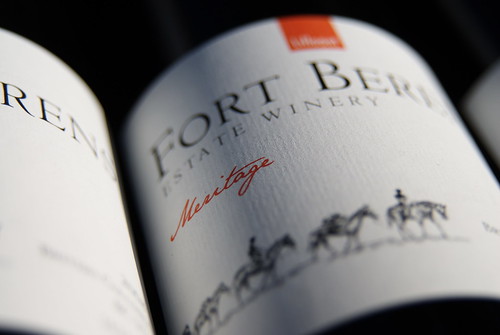
Fort Berens Meritage 2010 ($28, 89 points) — This is a blend of 65% Merlot, 30% Cabernet Sauvignon and 5% Cabernet Franc, all sourced from the Sundial Vineyard in the Okanagan and aged in French and American oak barrels. The nose shows earth, cherry, bramble, crushed currants, mocha and oak spices. It has medium weight on the palate with ripe cherries and blackberries to go with vanilla toast, cocoa and a bed of ripe tannins. Could cellar for a few years or drink now.
Fort Berens 23 Camels Red 2011 ($19, 86 points) — The intriguing 23 Camels name was coined after the pioneering idea of Lillooet resident John Callbreath, who in 1862 imported 23 camels as pack animals for the Cariboo gold rush. The idea was unsuccessful (a little chilly in the winter for such creatures!) but the story lived on through the ages. This Bordeaux-varietal red blend shows cherries, plums, light cedar and spice notes with a touch of blueberry and cassis on the nose. It’s light in style, with savoury red fruits, spice and pepper notes. Good bistro-style red.
Fort Berens 23 Camels White 2011 ($15, 88 points) — This blend of Pinot Gris, Chardonnay and Riesling with nearly half the fruit from Lillooet has a nice refreshing nose of peach, citrus, grapefruit, apple slices and a touch of lime. It’s crisp and fruit-focused on the palate with apple-grapefruit goodness.
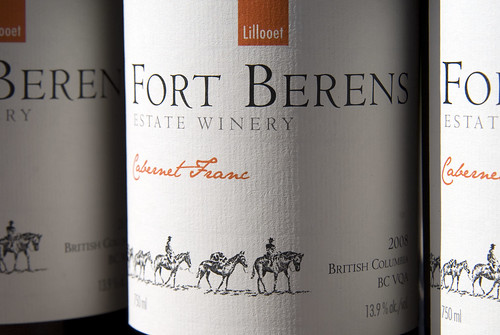
Fort Berens Cabernet Franc 2010 ($25, 90 points) — All fruit was sourced from the Sundial Vineyard in the Okanagan Valley and only 136 cases were made. The nose shows gorgeous warm raspberry jam, sage, black currants, earth and lovely spices swirling in the glass. This is classic Cab Franc, with rich berry fruits, earthy-savoury nuances, soft tannins and touches of leather, tobacco and tar that chime in through the finish. Good aging potential.
•••
Township 7 Vineyard and Winery

Township 7 was founded in 2001 and includes two B.C. wineries, one situated in the scenic Fraser Valley and the other on the picturesque Naramata Bench in the Okanagan Valley.
The Vancouver winery is located in the south Langley countryside in a quaint building reminiscent of the many riding stables in the neighbourhood. Named after the historic community of south Langley, its original name in the late 1800s was Township 7 — the cottage on the property is an original building from the 1930s.
Chardonnay, Pinot Noir and Merlot vines at Township 7 Langley’s 5-acre property were planted in the spring of 2000 and the winery opened for business in July of 2001.

In the fall of 2003, a second vineyard property was purchased on the Naramata Bench. The Okanagan wine shop is surrounded by 7 acres of vines on the Naramata Bench with views of both Lake Okanagan and Skaha Lake. The majority of the wines are crafted there.
Township 7’s focus is on the production of small lot, high quality wines crafted with carefully chosen, sustainably grown grapes from estate and family growers.
Here’s what I liked from the new releases:
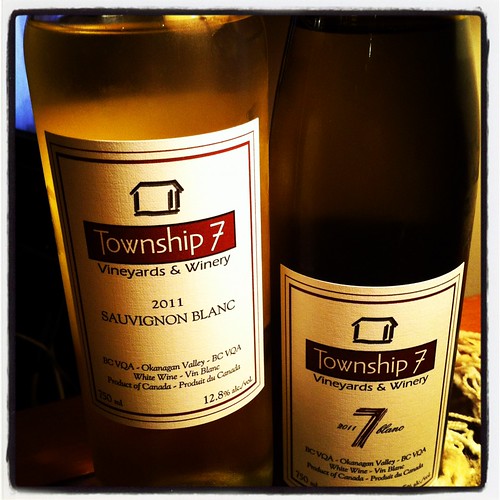
Township 7 Blanc 2011 ($19, 88 points) — A blend of Gewurztraminer (60%) and Pinot Gris, partially wild fermented and 100% co-fermented, from the Township 7 vineyards on the Naramata Bench. A lovely floral nose with Asian pear, citrus, musk, apples and a swirling mineral note. It’s clean and refreshing on the palate with ripe citrus, apple and a sweet note of honey. It’s all carried by racy acidity. A very nice, if not unconventional, white blend.
Township 7 Sauvignon Blanc 2011 ($19, 89 points) — A classic nose of fresh-cut grass, grapefruit and zesty lime. Fantastic verve and vibrancy on the palate with citrus fruit and just the right amount of grass and herbs. Refreshing and zesty through the finish.
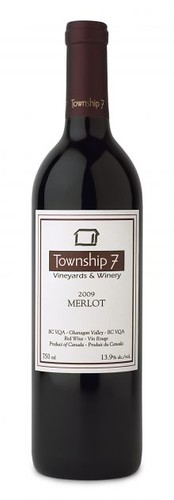 Township 7 Unoaked Chardonnay 2011 ($18, 87 points) — All the fruit comes from the Sunial Vineyard in Oliver. The nose is pure and fresh with apple, peach and citrus notes. The fruit forward style continues on the palate with clean, lively and persistent flavours through the finish.
Township 7 Unoaked Chardonnay 2011 ($18, 87 points) — All the fruit comes from the Sunial Vineyard in Oliver. The nose is pure and fresh with apple, peach and citrus notes. The fruit forward style continues on the palate with clean, lively and persistent flavours through the finish.
Township 7 Merlot-Cabernet Sauvingon 2010 ($20, 88 points) — The fruits for this red blend were sourced entirely from the Blue Terrace Vineyard in the warm region of Oliver in the Okanagan Valley. The nose displays plump currants and raspberry fruit, savoury spices and cedar nuances. It is quite thick and rich on the palate with ripe fruits, good structure, oak spices and touches of tar, licorice and cocoa through the finish. Very nice wine at this price.
Township 7 Merlot 2009 ($25, 90 points) — Winemaker Bradley Cooper has crafted a beauty here from South Okanagan fruit. It has a lovely nose of raspberry and black cherry fruit with earth, toasted vanilla spice, and a note of sweet sandalwood and chocolate. It is meaty on the palate with solid structure, firm tannins, bright red fruits, integrated spices and wonderful balance already. To drink now or hold a few years.
•••
McWatters Collection

Harry McWatters, widely considered the pioneer of Okanagan Valley wine, along with Richard Cleave and Harry’s daughter Christa-Lee McWatters-Bond share a passion and single vision to produce wines that uniquely reflect the special qualities of the Black Sage Bench.
The grapes are farmed sustainably since the land was purchased almost two decades ago and the team employs best practices for the soil and the vines with respect to pests, energy usage and water conservation.
The rugged desert-like climate of the famous Black Sage terroir provides picture perfect growing conditions for the big reds and elegant, luscious white wines such as Chardonnay and Sauvignon Blanc that McWatters strives to make.
He has just released his Chardonnay from the McWatters collection.
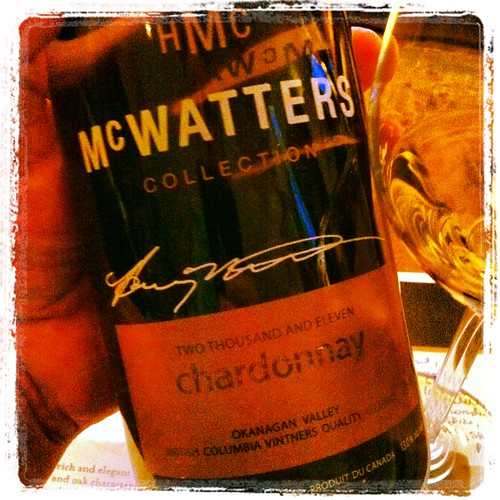 McWatters Chardonnay 2011 ($30, 91 points) — The nose shows wonderful tropical-creamy fruit with added notes of citrus, butter, vanilla and toasted nutmeg. It is lush and rich on the palate with defining oak-inspired spices to go with succulent pineapple and mango fruit that’s lifted by a citrus blast through the finish. An elegant Chardonnay that is balanced out by good verve and acidity.
McWatters Chardonnay 2011 ($30, 91 points) — The nose shows wonderful tropical-creamy fruit with added notes of citrus, butter, vanilla and toasted nutmeg. It is lush and rich on the palate with defining oak-inspired spices to go with succulent pineapple and mango fruit that’s lifted by a citrus blast through the finish. An elegant Chardonnay that is balanced out by good verve and acidity.


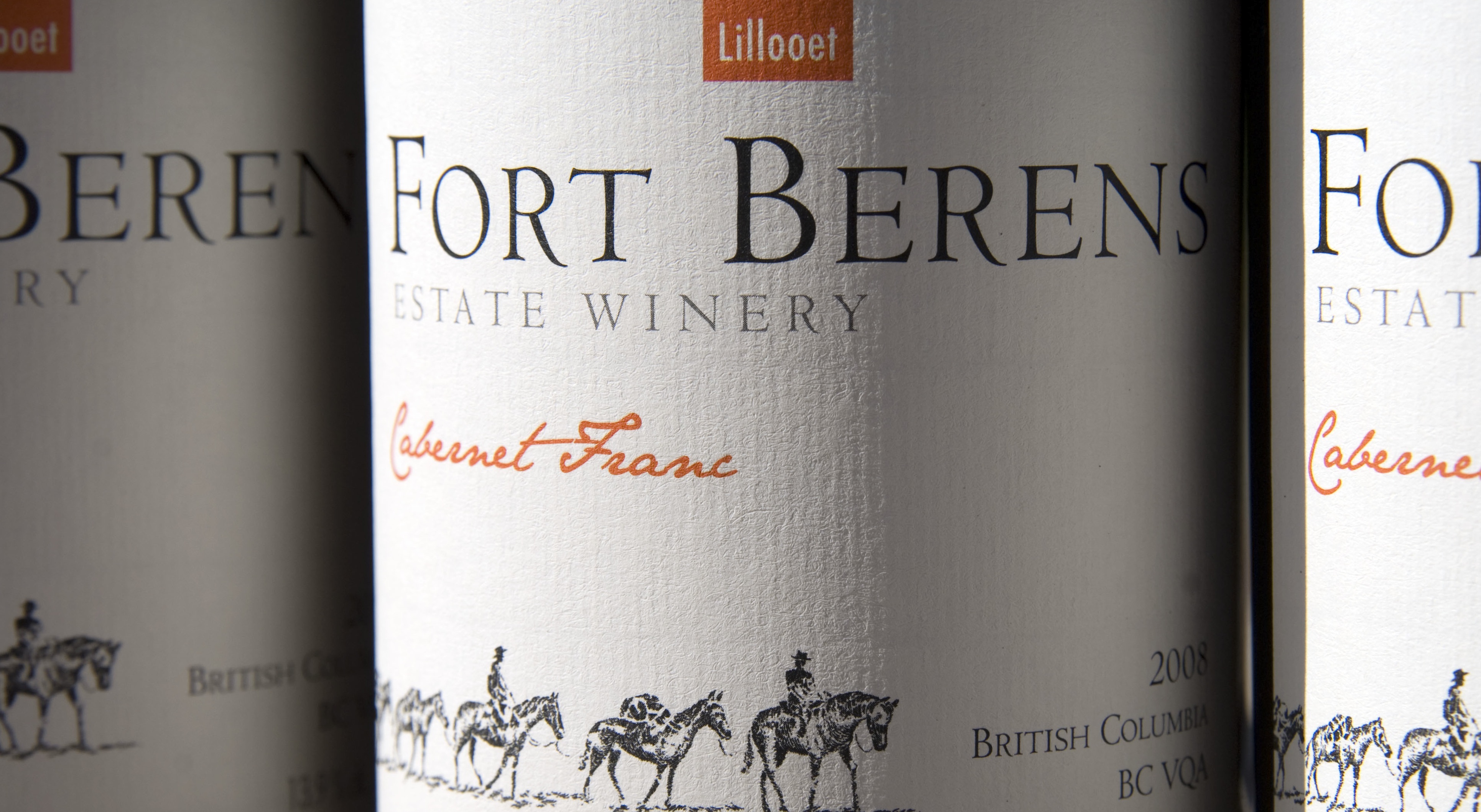



Comment here